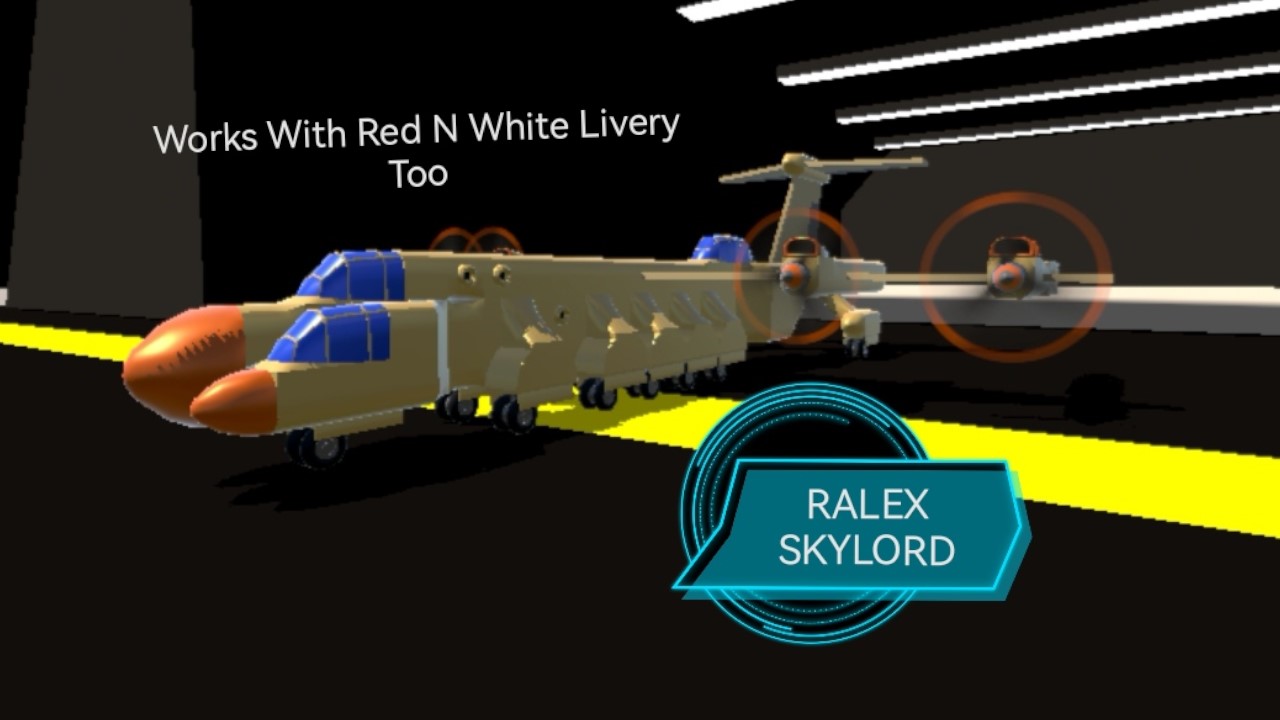It looks better with Red and White livery,And here's my fictional history The Ralex Skylord Oversized Bomber was conceived in the late 1920s as part of an ambitious intercontinental strategy by the fictitious Commonwealth of Aeradia. Following World War I, Aeradian military strategists recognized the potential of long-range bombers to revolutionize warfare. In 1928, the Aeradian Aeronautical Corporation (AAC), under the leadership of visionary engineer Dr. Horace Ralex, initiated the "Skylord Project" to develop the world's largest bomber. The Skylord was intended to have unprecedented range, payload capacity, and defensive armament. Dr. Ralex envisioned an aircraft so massive it could strike targets across continents without refueling, a concept that was both visionary and controversial. The project faced skepticism, budget overruns, and technical hurdles, but in 1935, the prototype Skylord Mk. I took to the skies. Its innovative design included a double fuselage for improved structural integrity, retractable landing gear (a rarity at the time), and an early form of radar to enhance navigation. The Skylord entered service in 1936, with Aeradia boasting it as the "Titan of the Skies." The bomber played a crucial role in the Second Continental War (a fictional analog to WWII), where it became a symbol of Aeradian air superiority. Early Triumphs: In the war's initial stages, Skylord bombers devastated enemy supply lines and infrastructure. Their long range allowed them to bypass traditional air defenses, striking deep into enemy territory. Challenges: However, the Skylord's size made it a slow, vulnerable target. Enemy forces developed advanced fighter planes specifically to intercept Skylords. Losses mounted, particularly during the infamous "Battle of the Stratosphere" in 1942, where 15 Skylords were downed in a single raid. Technological Adaptations: To counter these losses, Aeradia introduced the Skylord Mk. II in 1943. This variant featured reinforced armor, improved engines, and a "drone escort system" where unmanned aircraft accompanied Skylords on missions. Technological Adaptations: To counter these losses, Aeradia introduced the Skylord Mk. II in 1943. This variant featured reinforced armor, improved engines, and a "drone escort system" where unmanned aircraft accompanied Skylords on missions. Decline and Decommissioning (1946-1952)
After the war, the Skylord was rendered obsolete by jet technology and missile systems. However, its role in reshaping aerial warfare could not be overstated. The bombers were gradually retired, with many converted into cargo planes for civilian use. The last operational Skylord, nicknamed "Old Titan," completed its final flight in 1952. Today, only three Skylords survive, preserved in museums as monuments to Aeradia’s aviation ingenuity. Legacy
The Ralex Skylord remains an icon in aviation history. It influenced subsequent bomber designs and inspired future generations of engineers. Its story is one of ambition, innovation, and adaptation in the face of adversity—a testament to humanity's relentless pursuit of progress, even amidst the horrors of war.
Specifications
General Characteristics
- Created On Android
- Wingspan 39.1ft (11.9m)
- Length 49.2ft (15.0m)
- Height 14.9ft (4.5m)
- Empty Weight N/A
- Loaded Weight 18,714lbs (8,488kg)
Performance
- Power/Weight Ratio 1.2
- Horse Power/Weight Ratio 0.106
- Wing Loading 77.1lbs/ft2 (376.2kg/m2)
- Wing Area 242.9ft2 (22.6m2)
- Drag Points 8811
Parts
- Number of Parts 223
- Control Surfaces 5
- Performance Cost 974





It does not fly, but I do vibe with it.
Goodness gracious
Thanks To @oldmate52 I Now Can Make Photos Of Planes Outside The Editor